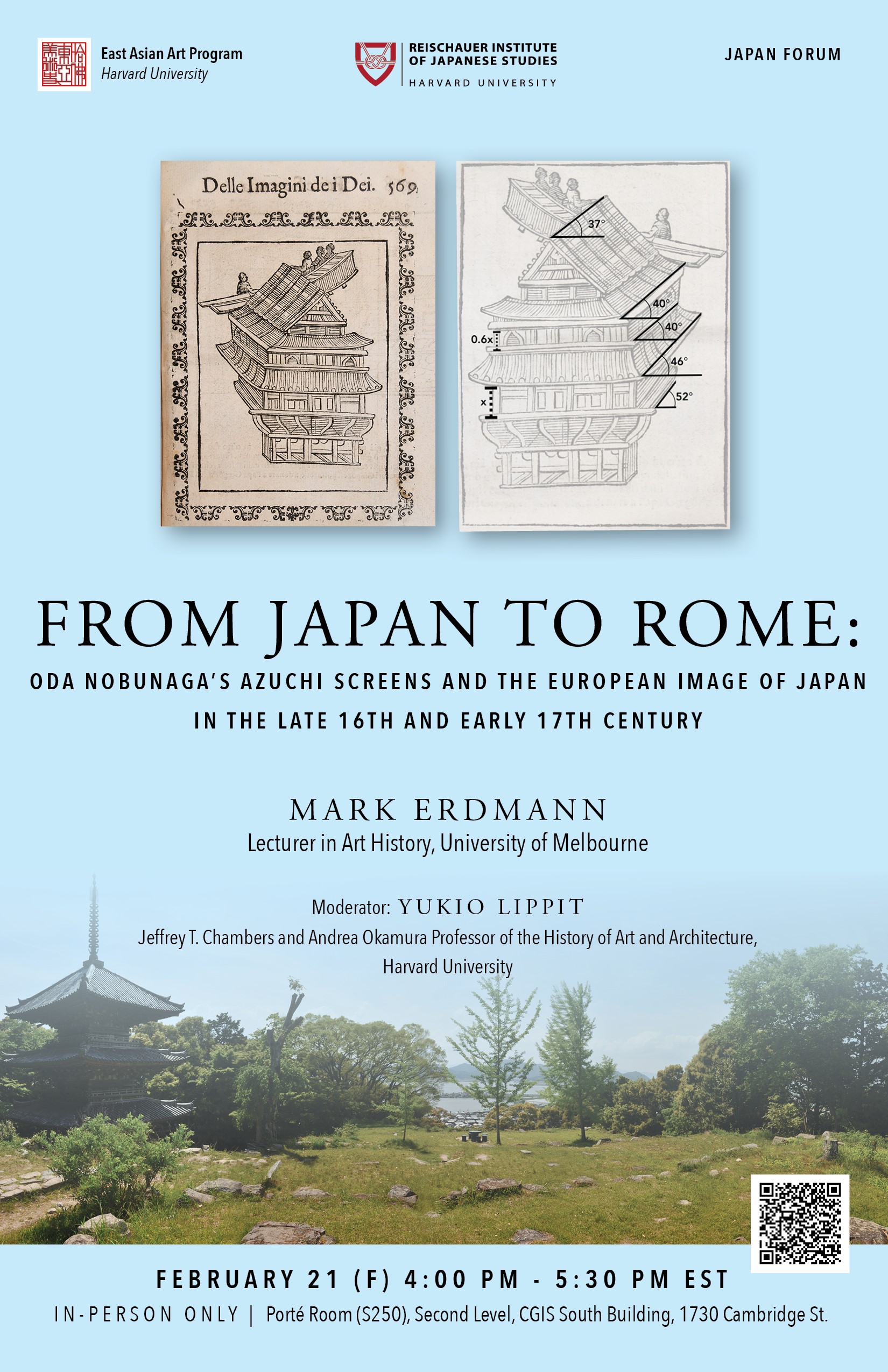From Japan to Rome: Oda Nobunaga’s Azuchi Screens and the European Image of Japan in the Late Sixteenth and Early Seventeenth-Century
The Azuchi Screens (Azuchi-zu byōbu) are a pair of six-panel folding screens that were commissioned around 1579 by the warlord Oda Nobunaga (1534–1582) and executed by Kanō Eitoku (1543–1590), the fourth-generation head of the Kanō school of painting. Depicting Nobunaga’s newly constructed Azuchi Castle and its surrounding town, the screens are the only known depiction of this short-lived landmark in architectural history and progenitor of the iconic Japanese castle form. Gifted to the Jesuits and presented in 1585 to Pope Gregory XIII (1502–1585) in Rome, the screens became the first major diplomatic gift offered from Japan to the West but disappear from record shortly thereafter. Currently, the only known illustrated vestiges of this international treasure are two woodblock prints that were based on sketches by the Louvain antiquarian Philips van Winghe (1560–1592) and included in Lorenzo Pignoria’s (1571–1631) Le imagini de gli dei de gli antichi (Images of the Gods of the Ancients, 1624). Owing to their awkward character, these prints have been long dismissed as the product of orientalist naivety. However, close examination of these images and comparison with Eitoku’s other paintings can reveal much about the visual profile of the Azuchi Screens as well as the paintings’ significance to a European audience.
Reischauer Institute Japan Forum co-sponsored by the East Asian Art Program, Harvard University
